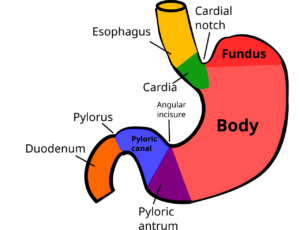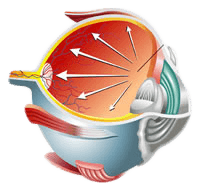This podcast explores the critical role of nutrition in surgical care, discussing the impact of malnutrition, modern dietary guidelines, and approaches like enteral and parenteral nutrition to optimize patient recovery and reduce complications.
Transcript
Speaker 1:
Hello and welcome back to Surgery 101. The podcast brought to you with help from the Department of Surgery at the University of Alberta. My name is Dr Jonathan White. I’m a general surgeon here at the Royal Alexandra Hospital in Edmonton. This is the fifth in a series of episodes all about general surgical topics. In this week we’ll be considering the topic of nutrition in surgical patients. We’ll be hearing from Dr. Leah Gramlich, who’s a colleague of mine here at the Royal Alexandra Hospital. She’ll be explaining why nutrition and malnutrition is so important in patients having surgery and looking at some of the typical guidelines for what we feed hospitalised patients. And she’ll be considering ways we can enhance nutrition in surgical patients, including oral nutrition and alternative methods of nutrition. So let’s get ready to explore the proper care and feeding of surgical patients. Here on Surgery 101.
Speaker 2:
Welcome my name is Lia Gramlick and this surgery podcast is about food and nutrition in your surgery patients. I’m a gastroenterologist and a physician nutrition specialist at the Royal Alexander Hospital. There are six things that I want you to take away from this short podcast. Firstly, I want you to be able to describe why nutrition or malnutrition is important in your patients. I want to be able to describe dietary components, guidelines, and food considerations in hospitalized patients. We would like to describe strategies to enhance food intake in hospital patients. We want to talk about alternatives to oral diet, including and parenteral nutrition and the rationale for the use of parenteral and parenteral nutrition indications, contraindications, and complications. Let’s begin. Malnutrition is prevalent in up to 45% of hospitalized surgery patients in Canada. Patients with malnutrition, based on the subjective global assessment, have longer lengths of stay, more perioperative complications, higher risk of death, higher costs, and poorer quality of life. This podcast will review diet considerations in surgery in patients and we’ll talk about alternatives for those patients who are unable to meet nutrient requirements by mouth. It’s important to recognize that risk for malnutrition exists and that we have a plan in place to prevent it, to detect it and to treat it so that outcome for the surgical patients can be optimized. Dietary considerations in surgery patients are unique. Dietary intake is described in the Canada Food Guide for Healthy Eating and it suggests a pattern of dietary intake that’s associated with health. It includes foods in four groupings, fruits and vegetables, grains, milk and milk products, and meat and alternatives. Taken in the right amounts, these food groups and foods provide macronutrients, protein, carbohydrate, and fat, and micronutrients, electrolytes, mineral trace elements and vitamins. Inpatients who require surgery, their underlying disease and its treatment may predispose them to malnutrition as might their hospital stay. Patients who are awaiting surgery are often kept fasting prior to surgery or for tests or they may have trouble accessing food in the hospital for a variety of reasons. They can’t reach it, they’re gone for investigations, they’re anxious. This might increase their risk for malnutrition and subsequent poor surgical outcome. Surgeons are in a great position to be aware of modern fasting guidelines. Specifically, patients are allowed to eat solids up to six hours before surgery and may have liquids up to two hours before surgery. In addition, surgeons need to be aware of that early resumption of oral intake following surgery, for instance on post-op days zero or one, should sometimes be the rule. We use commonly oral nutrition supplements like N-Sure or Boost to get calories and protein into patients who might not be hungry for regular meals or who might not be ready to take in a regular diet. One of the other ways that healthcare professionals in general and surgeons in particular can pay attention to food intake in their surgery patients is to deal with symptoms that might be a consequence of narcotic use for pain management post-op by treating ileus with things such as gum chewing or laxatives. In addition, nausea is a very common post-op complication, the treatment of which will result in better oral intake and improvement in nutritional status, ultimately resulting in improvement in outcome. In patients who are unable to meet nutrient requirements by oral intake and who are at nutritional risk might require an alternative to oral feeding, nutrition support. There are two main categories of nutrition support. Antral nutrition or feeding via tube usually through the nose into the stomach or into the small bowel. Or parenteral nutrition, nutrition that is delivered by the vein. Tube feeding or enteral nutrition is indicative for patients who have an intact and functioning gastrointestinal tract, but who are unable to eat by mouth. Examples of such patients include patients who are intubated and in the intensive care unit, or patients who have had a stroke and simply cannot swallow. Enteral products are designed to meet both macro and micronutrient requirements, and these products delivered by a fine-bore nasogastric tube go into either the stomach or more distally into the small bowel when patients can’t tolerate feeding into the stomach. Contraindications to enteral nutrition include bowel obstruction and non-functioning GI tract such as you might have with a high output gastro cutaneous fistula. Complications of ventral nutrition include intolerance of tube feeds, aspiration of tube feeds, and tube malposition. In patients who are unable to meet their nutrient requirements by mouth and who do not have a functional GI tract. Parental nutrition or nutrition by the vein can be provided. Patients with this problem have intestinal failure and this may be either short term or long term. Examples of patients who have intestinal failure include patients who have a bowel obstruction, patients on high-dose pressors, patients with multiple intracutaneous fistulas. The nutrient prescription developed for parenteral nutrition is developed by a team that includes the physician, a dietitian, and a pharmacist. The parenteral nutrition solution might be a premixed solution or it may be tailored to the individual, particularly those who have high electrolyte or volume requirements or who have diabetes. The parenteral nutrition can be administered either through a peripheral vein if peripheral veins are plentiful and if it’s that duration of use will be short. Or they can be provided through a central vein for longer term use with more concentrated and more highly nutrient-dense solutions. Complications of parenteral nutrition include line-related complications such as catheter-related bloodstream infection or thrombosis and metabolic complications such as electrolyte and violence, hyperglycaemia, or liver disease. Paying attention to nutrition care in your patients will help to reduce the risk of complications and help patients respond better to their surgical intervention. Your first strategies should focus on getting patients who can eat to eat and meet their requirements without fasting them. However, some patients will require more formal approaches with nutrition support such as enteral or parenteral nutrition and a team-based approach to care with the help of dietitians, nurses and pharmacists. Thank you.
Speaker 1:
Thanks, Leah, for that excellent overview of a topic that every single daughter needs to know about. As a general surgeon myself, I spend a lot of time thinking about what my patients are doing are eating and not eating and wondering when I can feed them again after surgery. So this is a very helpful topic for me as well. Next week, Dr Gramlich is returning to cover the topic of unexplained weight loss. So thanks for listening and we’ll see you back here next week on Surgery 101.






